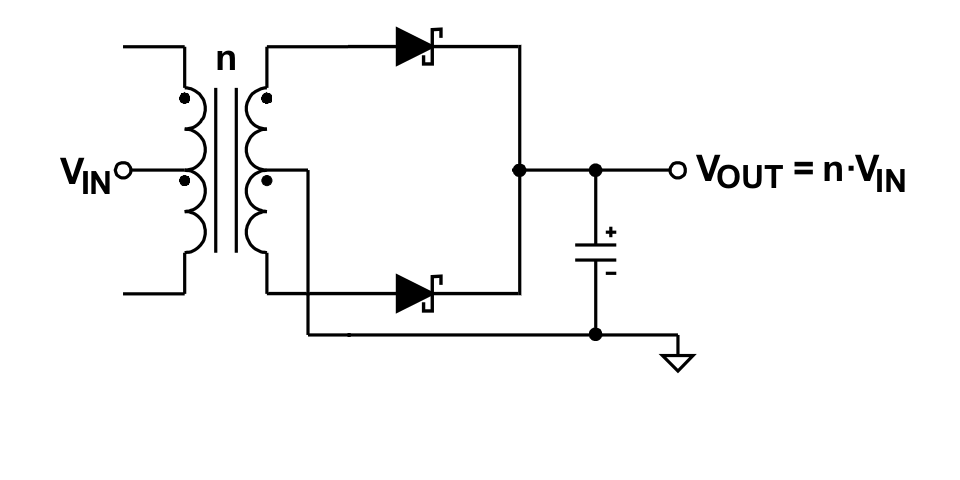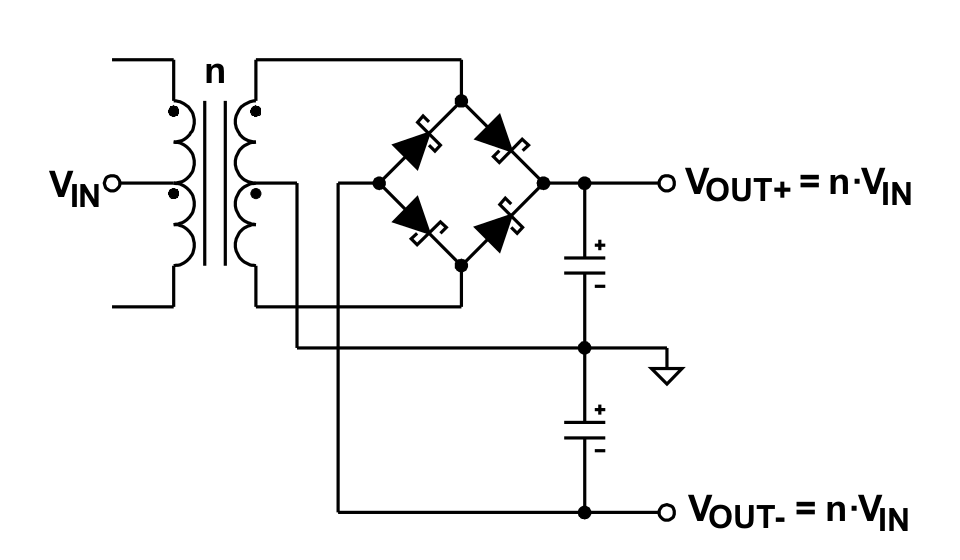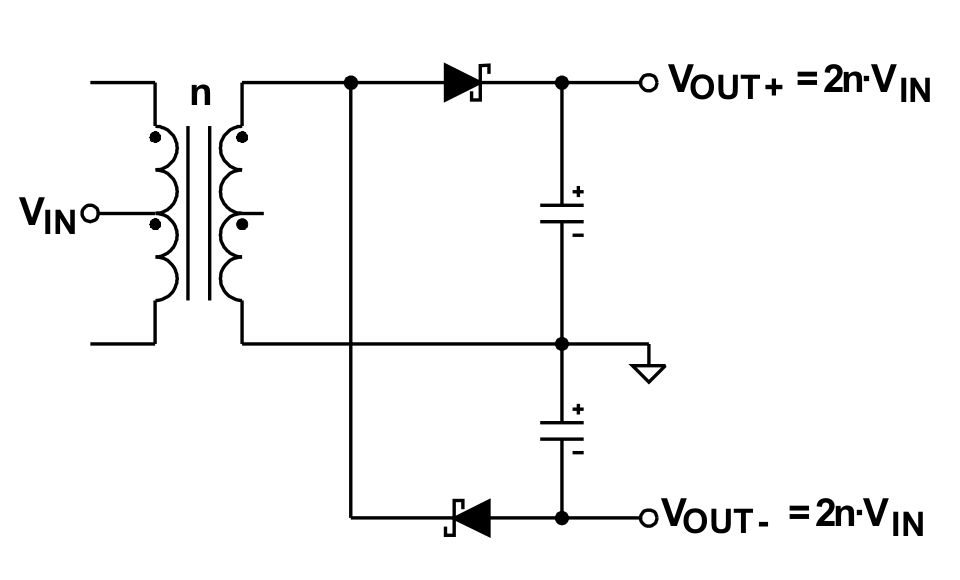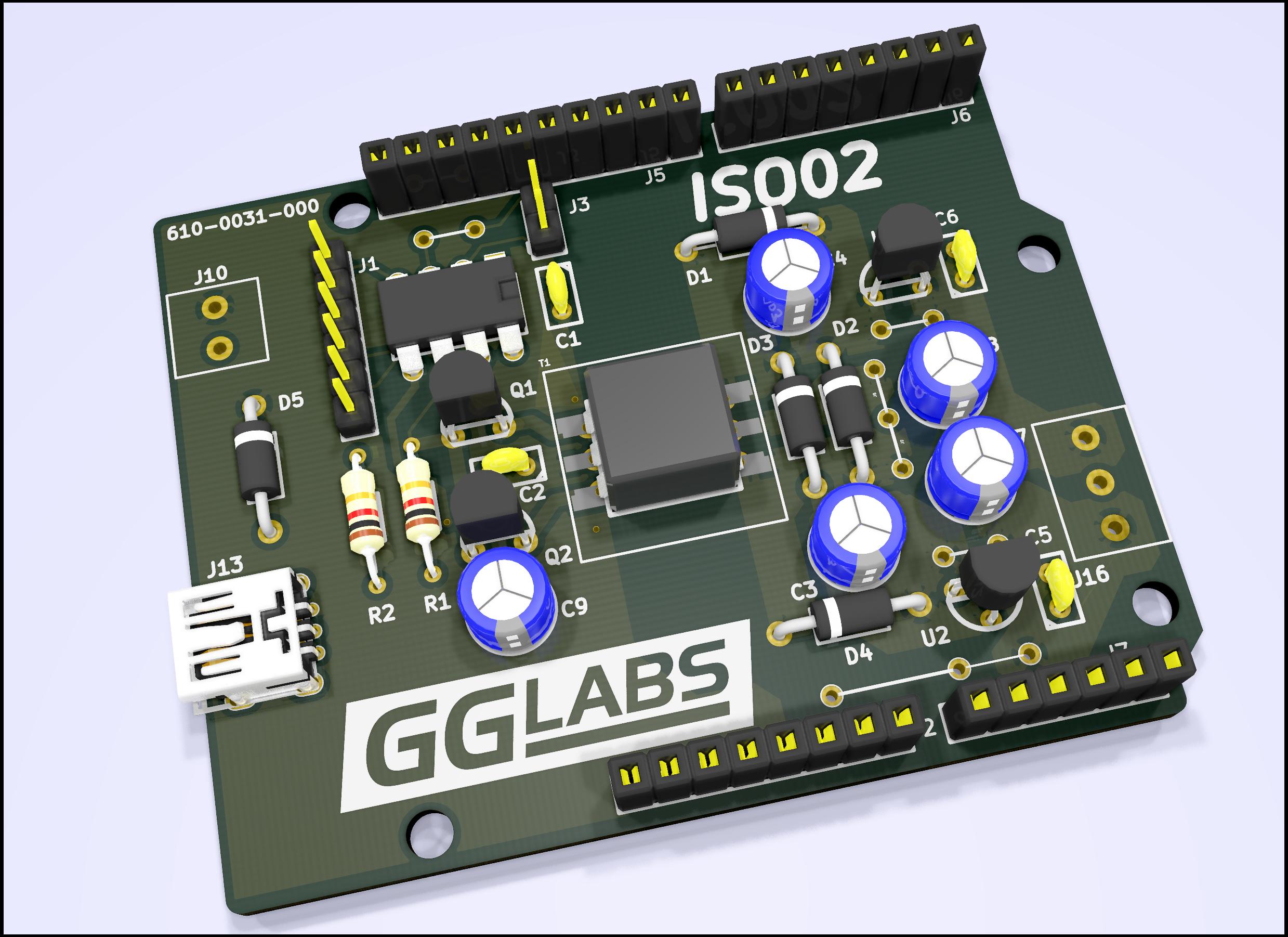 While working with Arduino in industrial applications it's often useful to have a isolated voltages available. Depending on the circuit configuration, ISO02 can generate galvanically isolated unipolar and symmetric voltages from the 5V Arduino power. The circuit is based on a basic push pull configuration and uses an easy to obtain off the shelf transformer.
While working with Arduino in industrial applications it's often useful to have a isolated voltages available. Depending on the circuit configuration, ISO02 can generate galvanically isolated unipolar and symmetric voltages from the 5V Arduino power. The circuit is based on a basic push pull configuration and uses an easy to obtain off the shelf transformer.
Schematics
The circuit is an open loop push-pull topology. Unlike the ISO01 we opted for a 100% through hole design. A PIC12F752 MCU is used as a MOSFET driver. The MCU is programmed to output a 166KHz complementary square wave on the RA0 and RA2 pins. These have a special I/O pad capable of driving 50mA for direct connection to the mosfets gate. A pair of common 2N7000 mosfets are used to drive the transformer. R1 and R2 provide transformer winding current feedback to the MCU.
Multiple rectification topologies are supported on the secondary side to obtain different voltages without the need for custom transformers. For more stable output voltages, and option to add linear regulation is achieved with a pair of 78Lxx and 79Lxx.
The board accepts input voltage directly from the Arduino headers or when used standalone from a terminal block or from a mini USB connector.
The scopeshots below show the board in action in a bridge 2 topology using a 1:2.2 Murata 78485/35C transformer. Ch1 and Ch2 are the transformer legs. The switching frequency is 166KHz as expected. Ch3 is the current in the transfomer and Ch4 is a filtered version of the current. The second scopeshot shows both the primary and the secondary side. Ch1 and Ch4 are the same as the previous image, Ch2 is the secondary leg of the transformer and Ch3 is the rectified positive voltage.
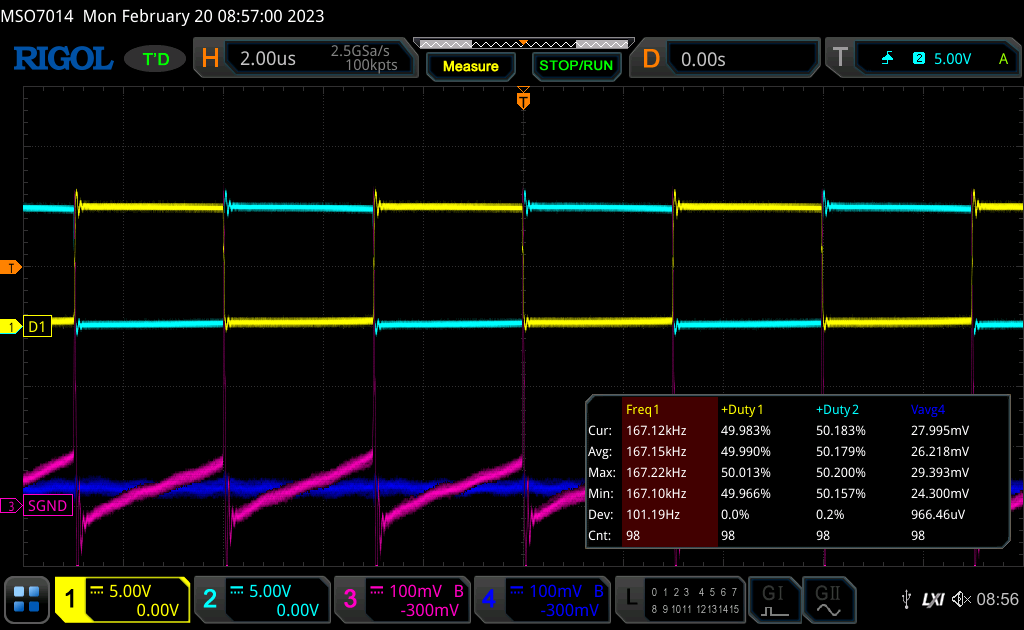
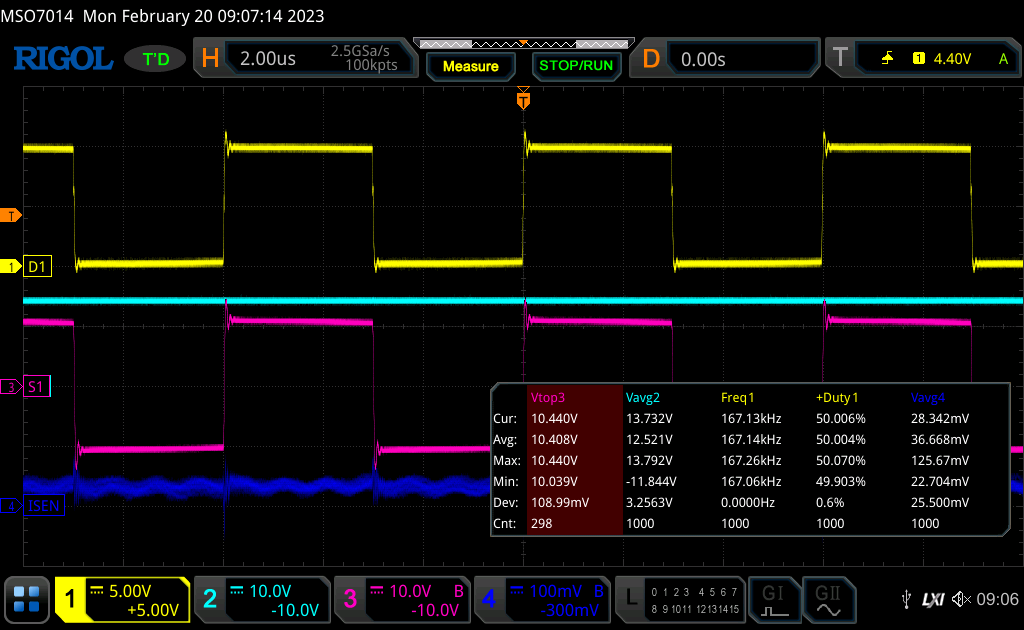
The images below are the exact same setup but applying a 220ohm load to the positive 10V output (~43mA). From the measured primary current of 123mA the conversion efficiency is estimated at around 66%.
Transformer Selection
The design can use many off the shelf transformers as it can use most center tapped transformers designed for other isolated DC-DC converters.
The following table has some of the tested transformers with the associated approximate output voltage range.
| Manufacturer | Part Number | Turn Ratio | isolation | mounting | Output Voltage |
|---|---|---|---|---|---|
| Murata | 782482/53VC | 1.14CT:1CT | 4000V | PTH | 3.6-14.4V |
| Murata | 78250C | 1CT:1 | 1500V | PTH | 9-18V |
| Murata | 78250VC | 1CT:1 | 4000V | PTH | 9-18V |
| Murata | 76250ENC | 1CT:1 | 6000V | PTH | 9-18V |
| Murata | 78253/55C | 1CT:1.31CT | 1500V | PTH | 5.9-23.6V |
| Murata | 78253/55VC | 1CT:1.31CT | 4000V | PTH | 5.9-23.6V |
| Murata | 76253/55ENC | 1CT:1.31CT | 6000V | PTH | 5.9-23.6V |
| Murata | 782482/33VC | 1CT:1.33CT | 4000V | PTH | 6-24V |
| Murata | 782485/55C | 1CT:1.5CT | 2500V | PTH | 6.75-27V |
| Murata | 78253/35C | 1CT:2.14CT | 1500V | PTH | 9.6-38.5V |
| Murata | 78253/35VC | 1CT:2.14CT | 4000V | PTH | 9.6-38.5V |
| Murata | 76253/35ENC | 1CT:2.14CT | 6000V | PTH | 9.6-38.5V |
| Murata | 782485/35C | 1CT:2.2CT | 2500V | PTH | 10-40V |
The following table has additional SMD transformers that can be mounted on the board.
| Manufacturer | Part Number | Turn Ratio | isolation | mounting | Output Voltage |
|---|---|---|---|---|---|
| Wurth Electronics | 760390012 | 1CT:1.1CT | 2500V | SMD | 5-20V |
| Wurth Electronics | 750313734 | 1CT:1.1CT | 5000V | SMD | 5-20V |
| Bourns | HCTSM80910BAL | 1CT:1.11CT | 4200V | SMD | 5-20V |
| Wurth Electronics | 760390014 | 1CT:1.3CT | 2500V | SMD | 5.75-23V |
| Wurth Electronics | 750313638 | 1CT:1.3CT | 5000V | SMD | 5.75-23V |
| Wurth Electronics | 760390013 | 1CT:1.7CT | 2500V | SMD | 7.5-30V |
| Wurth Electronics | 750313769 | 1CT:1.7CT | 5000V | SMD | 7.5-30V |
| Wurth Electronics | 760390015 | 1CT:2.1CT | 2500V | SMD | 9.25-37V |
| Wurth Electronics | 750313626 | 1CT:2.1CT | 5000V | SMD | 9.25-37V |
| Bourns | HCTSM80308BAL | 1CT:2.66CT | 4200V | SMD | 12-48V |

